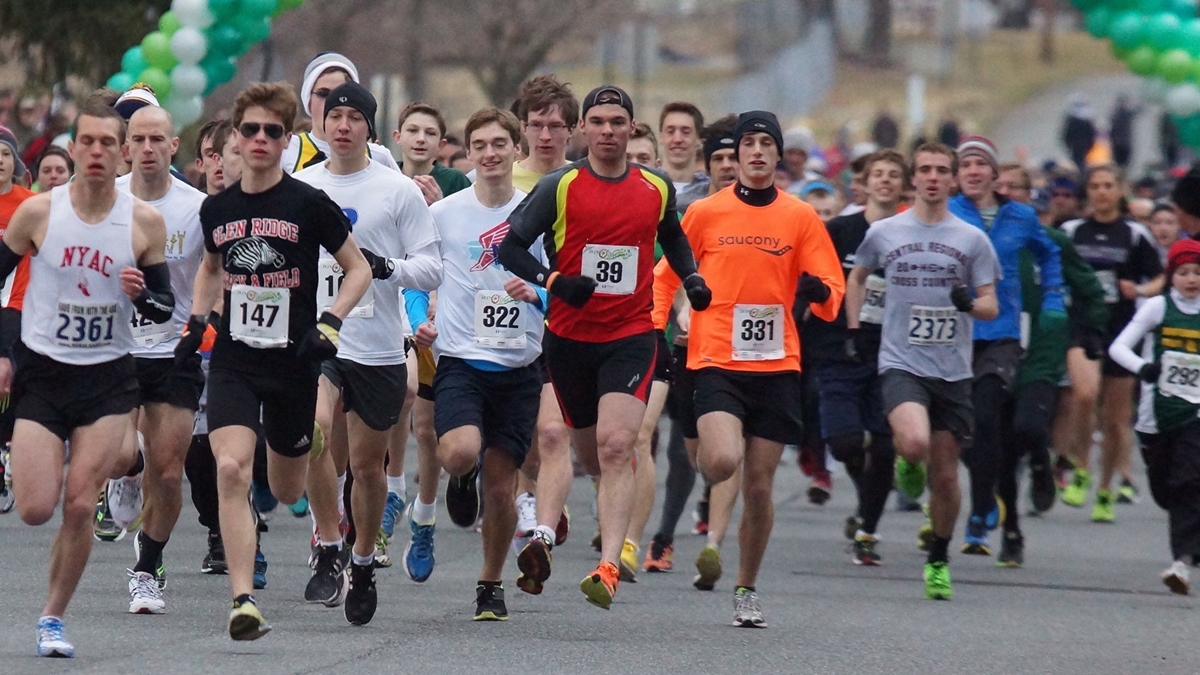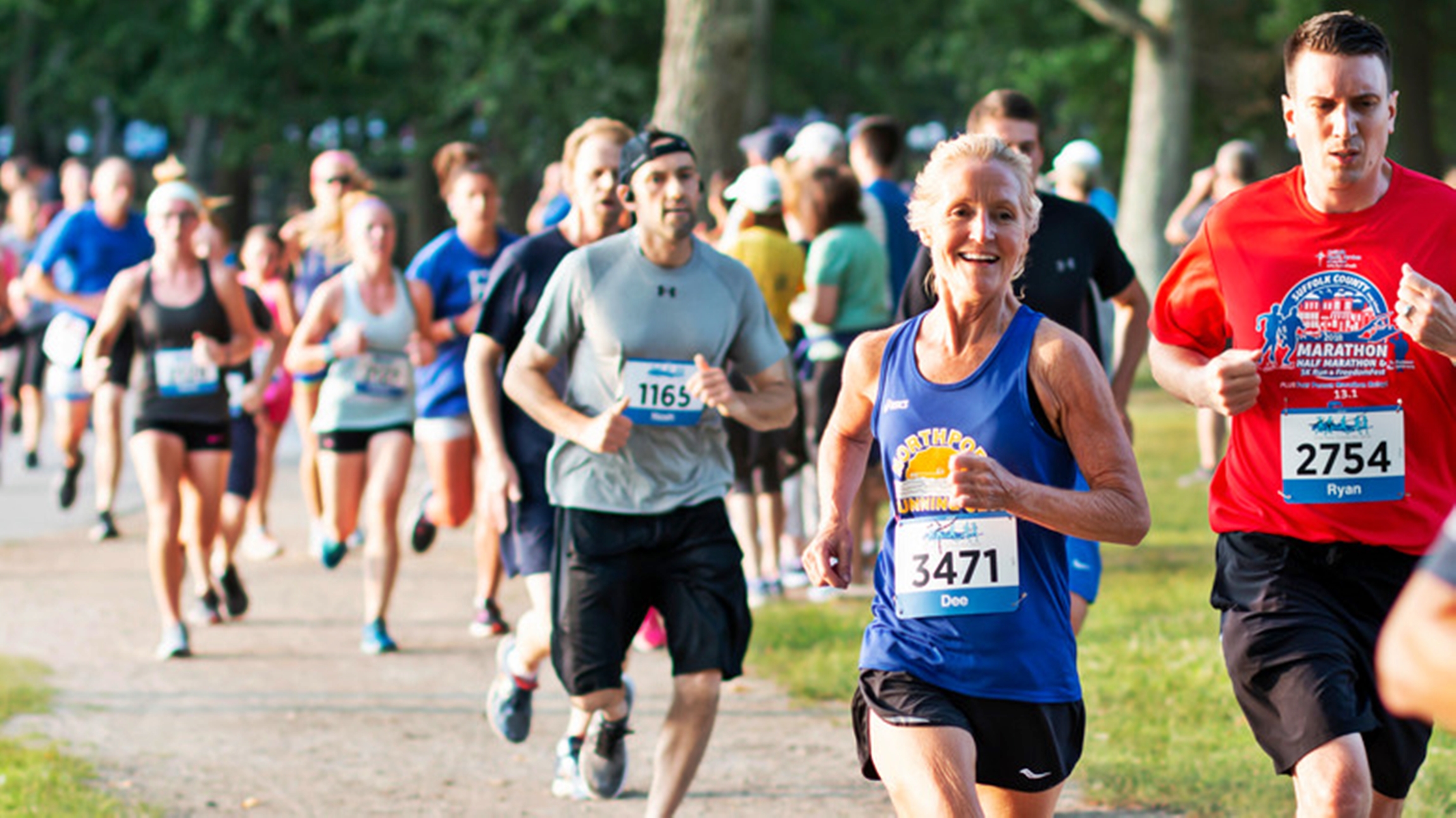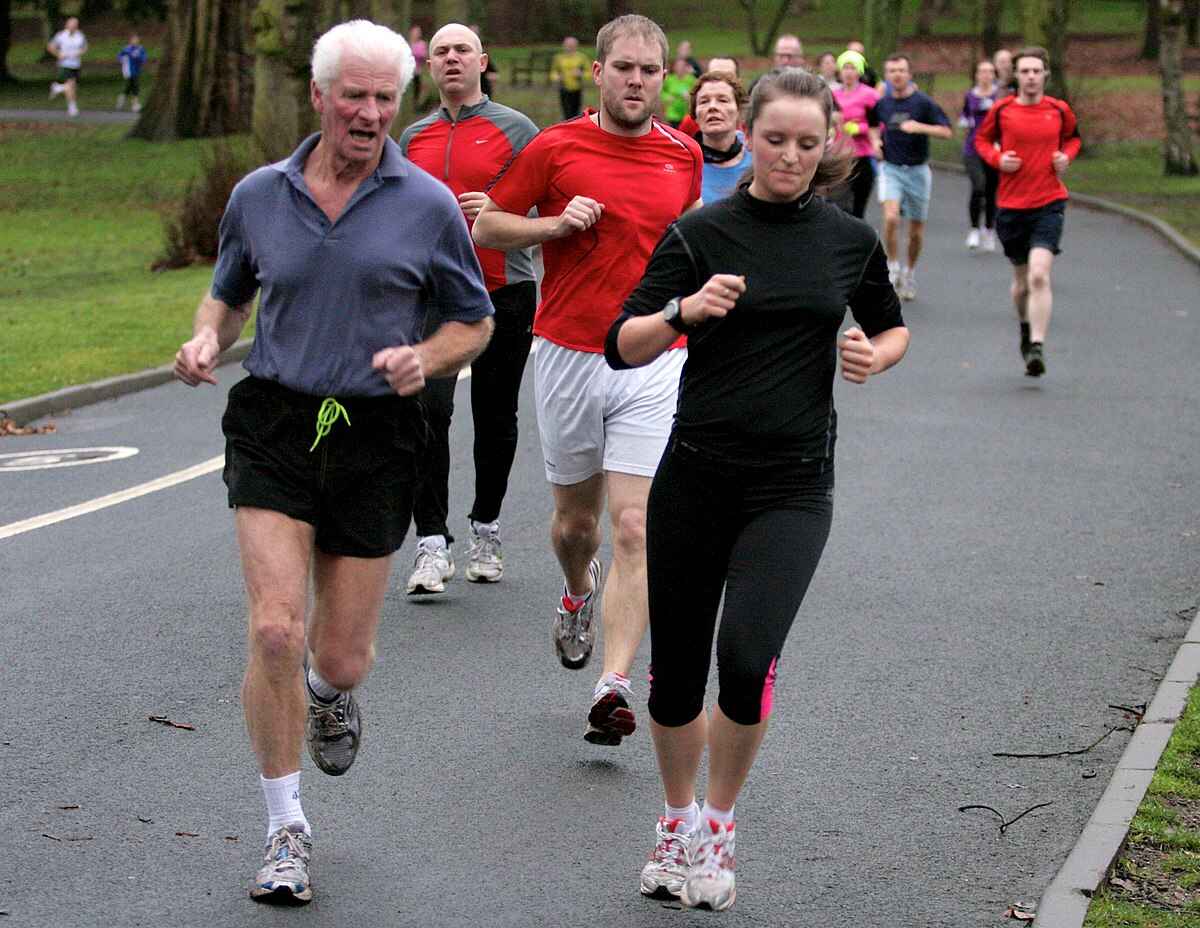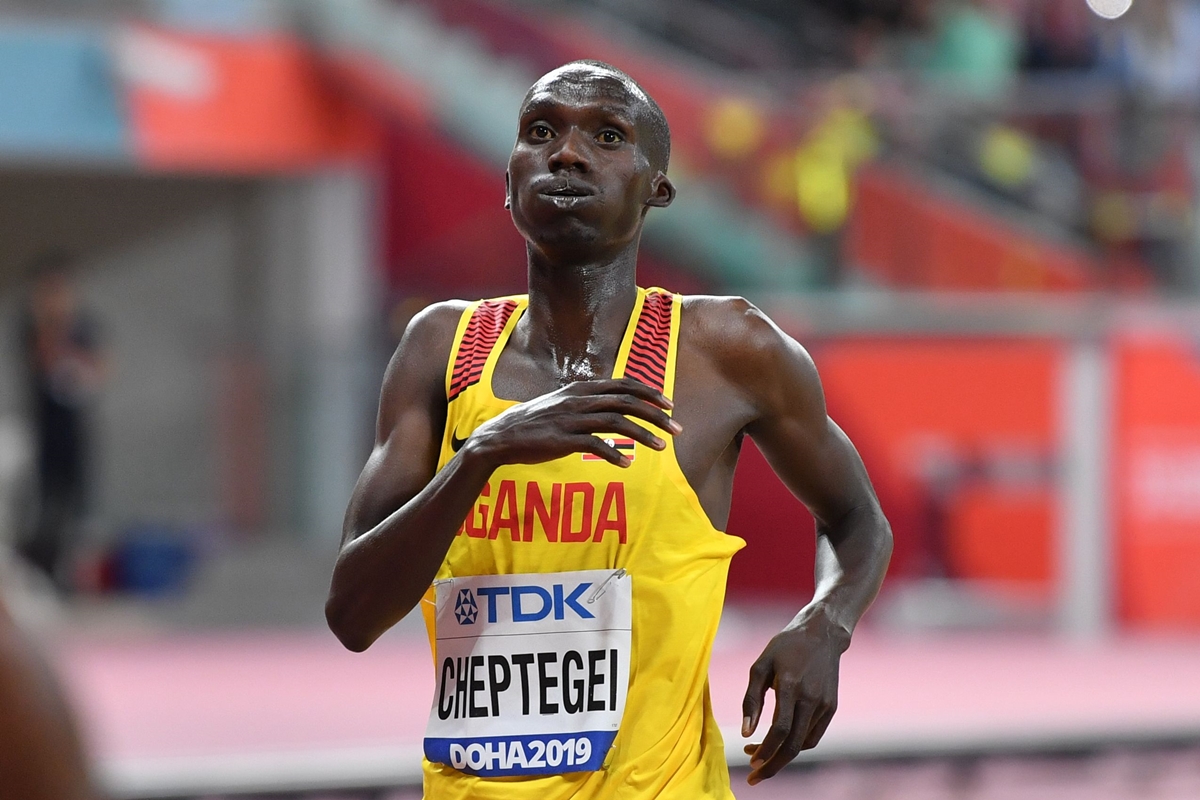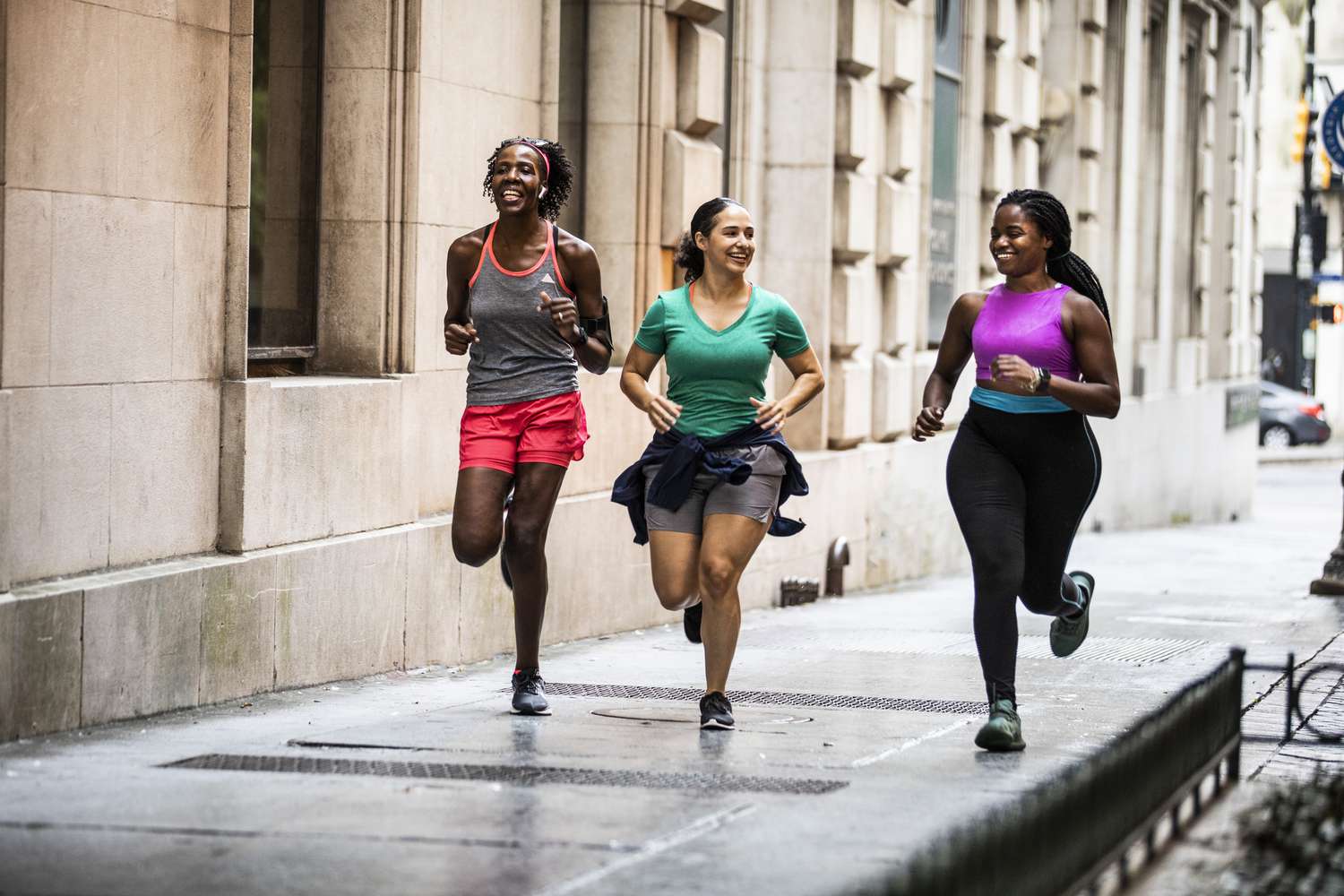

Featured
How Long Is A 5K Run In Miles
Modified: August 19, 2023
Discover how long a 5K run is in miles and get featured in our comprehensive guide. Find out the exact distance and start your running journey today!
Introduction
Welcome to the world of 5K runs! Whether you’re an experienced runner seeking a new challenge or a newcomer looking to dip your toes into the world of running, a 5K run is an excellent choice. This popular race distance offers a manageable yet exhilarating experience, making it a favorite among runners of all levels.
A 5K run, also known as a 5 kilometer run, is a distance race that spans a total of 5 kilometers (abbreviated as 5K), which is equivalent to approximately 3.1 miles. It is a fantastic way to test your speed, endurance, and overall fitness while enjoying the thrill of participating in a fun and competitive event.
Participating in a 5K run can promote a healthy and active lifestyle, help you set and achieve fitness goals, and provide a sense of accomplishment as you cross the finish line. Whether you’re running for personal reasons, raising funds for a charitable cause, or just enjoying the camaraderie of fellow runners, the 5K distance offers an accessible and rewarding experience.
One of the great aspects of a 5K run is that it can be enjoyed by individuals of all ages and fitness levels. Seasoned runners often use 5K races to gauge their current fitness level and track their progress, while beginners can use this distance as a starting point to build strength and endurance. It’s a race that welcomes everyone, from elite athletes aiming for a personal best to recreational runners seeking a new challenge.
In the following sections, we will delve deeper into understanding the concept of 5K runs, discuss how kilometers can be converted to miles, explore the factors that can affect the distance of a 5K run, highlight popular 5K races around the world, and offer some tips on training for a successful 5K run. So, lace up your running shoes and let’s dive in!
Understanding 5K Runs
A 5K run is a distance race that has become increasingly popular in recent years. The “5K” in its name refers to the distance of the race, which is equivalent to approximately 5 kilometers or 3.1 miles. Understanding the components and characteristics of a 5K run can help you better prepare for the race and enjoy the experience to the fullest.
First and foremost, it’s important to note that a 5K run can be either a standalone event or part of a larger running festival or charity race. Standalone 5K races are typically organized to cater specifically to participants interested in this distance, while larger events may include 5K runs as one of the race options alongside longer distances like 10K, half marathons, or marathons.
5K runs are known for their accessibility and inclusivity. They are often open to all age groups and fitness levels, welcoming both experienced runners and beginners alike. Many 5K races also offer a separate category for walkers, emphasizing the notion that the event is not just about speed and competition, but also about participation and personal challenges.
Another important aspect of a 5K run is the course. The course can vary from race to race, but it is typically designed to cover a distance of 5 kilometers (or 3.1 miles) in a safe and scenic manner. Courses can be held on roads, trails, or a combination of both, and may include hills or flat terrain depending on the location and event organizers’ preferences.
5K runs can have different starting arrangements as well. Some races may use a mass start, where all participants begin together in a large group, while others opt for wave starts, which involve dividing participants into smaller groups based on their anticipated finishing times. This helps to manage the flow of runners and reduce congestion on the course.
The atmosphere at a 5K run is often filled with energy and excitement. Participants may experience a mix of nerves and anticipation as they gather at the starting line, especially if it’s their first time running this distance or participating in a race. The support from fellow runners, spectators, and race volunteers along the course can provide motivation and encouragement, creating a sense of camaraderie and shared accomplishment.
In the following sections, we will explore the process of converting kilometers to miles, understand the factors that can affect the distance of a 5K run, highlight popular 5K races around the world, and provide tips for training for a successful 5K run. So, let’s continue our journey into the world of 5K runs!
Converting Kilometers to Miles
Many countries around the world use the metric system, where distances are measured in kilometers. However, if you’re more familiar with the imperial system and want to understand the equivalent distance in miles for a 5K run, it’s important to know how to convert kilometers to miles.
The conversion from kilometers to miles is relatively straightforward. One kilometer is approximately equal to 0.6214 miles. To convert kilometers to miles, you simply need to multiply the distance in kilometers by this conversion factor.
For example, let’s say you want to know how many miles a 5K run is. You would multiply 5 (kilometers) by 0.6214 (conversion factor) to get the equivalent distance in miles. In this case, a 5K run is approximately 3.107 miles.
Here’s the formula for converting kilometers to miles:
Miles = Kilometers x 0.6214
It’s important to note that this conversion is an approximation, as the conversion factor is a rounded value. Additionally, various countries have slightly different conversion factors, but 0.6214 is commonly used.
Knowing how to convert kilometers to miles can be useful not only for understanding the distance of a 5K run but also for other purposes, such as planning travel or understanding distances on road signs in different countries.
It’s worth mentioning that most race organizers provide distance information in both kilometers and miles to cater to participants from different countries and ensure everyone has a clear understanding of the course length. However, if you’re planning a run on your own or participating in a race where only the kilometer distance is provided, being able to convert kilometers to miles can come in handy.
In the next section, we will explore the factors that can affect the distance of a 5K run, shedding light on why some races may have slight variations in actual distance. So, let’s continue our journey!
Factors Affecting 5K Run Distance
While the standard distance for a 5K run is 5 kilometers or approximately 3.1 miles, it’s important to note that there can be slight variations in the actual distance from one race to another. Several factors can influence the accuracy of the measured distance, leading to deviations from the official 5K distance. Let’s explore some of these factors:
Course Certification: The accuracy of the 5K distance depends on the course certification process. Certified courses are measured by professional course measurers using specific guidelines and equipment. However, certification may not be mandatory for all races, especially smaller local events, leading to potential discrepancies in the measured distance.
Route Design: The design of the race route can have an impact on the measured distance. Factors such as turns, inclines, or uneven terrain can affect the distance covered. Sharp turns, for example, may cause runners to take a wider path, increasing the overall distance. Similarly, changes in elevation can add or subtract a few meters from the total distance.
Runner Spacing: In large races with a high number of participants, it’s common for runners to occasionally deviate from the optimal race line due to congestion. This can result in a slightly longer distance for individual runners. However, race organizers strive to minimize such deviations by implementing wave starts or other strategies to manage the flow of participants.
GPS Variations: Runners who use GPS devices to track their distance may notice variations in the measurements. GPS devices rely on satellite signals and can be affected by signal interference or inaccuracies. These variations are generally minor but can contribute to slight differences in recorded distances among participants.
Course Markings: Accurate and properly placed course markings are crucial for ensuring runners follow the correct path. Inaccurate or misplaced markings can lead to runners covering more or less distance than intended. Race organizers should ensure that course markings, such as cones, arrows, or signs, are clear and visible to minimize any potential discrepancies.
It’s important to keep in mind that while minor variations in distance can occur, they generally do not significantly impact the overall race experience. Most races strive to provide an accurately measured course, and any deviations are typically within an acceptable range.
In the next section, we will highlight popular 5K races from around the world, showcasing the diverse range of events available for runners of all levels. So, let’s continue our exploration of the exciting world of 5K runs!
Popular 5K Races
5K races have gained immense popularity worldwide, attracting runners of all abilities. From local community races to internationally renowned events, there is a wide range of 5K races to choose from. Let’s take a look at some of the most popular 5K races across the globe:
1. The Color Run: Known as the “Happiest 5K on the Planet,” The Color Run is a unique and vibrant race that combines running with bursts of color. Runners are showered with colored powder at various stations throughout the course, creating a fun and festive atmosphere.
2. Parkrun: Parkrun is a global event that offers free, timed 5K runs in parks and open spaces. It promotes inclusivity and encourages runners of all ages and abilities to participate. Parkrun events occur regularly in numerous countries, creating a supportive and community-oriented running experience.
3. Santa Run: The Santa Run is a festive-themed 5K race that takes place during the holiday season. Participants dress up as Santa Claus, complete with red suits and white beards, spreading cheer and bringing a jolly atmosphere to the race.
4. Electric Run: The Electric Run is a unique night run that lights up the course with dazzling visuals and vibrant music. Runners navigate through various neon-lit zones, creating a mesmerizing and immersive experience.
5. Race for Life: Race for Life is a series of 5K races held in the United Kingdom, dedicated to raising funds for cancer research. It attracts thousands of participants who run in memory or support of loved ones affected by cancer, creating a powerful and inspiring event.
6. Color Me Rad: Similar to The Color Run, Color Me Rad is another lively and colorful 5K race. Participants start the race dressed in white and have colored cornstarch thrown at them at various color stations along the course, resulting in a kaleidoscope of vibrant hues.
7. Park City Trail Series: The Park City Trail Series offers a series of 5K trail races, showcasing the scenic beauty of Park City, Utah. Participants tackle varied terrain and immerse themselves in nature while enjoying the challenges and rewards of trail running.
8. Terry Fox Run: The Terry Fox Run is an annual event that takes place in multiple countries to raise funds for cancer research. Inspired by the legacy of Terry Fox, a Canadian athlete who ran across the country to raise money for cancer research, the Terry Fox Run offers a non-competitive 5K run, emphasizing participation and support for a worthy cause.
These are just a few examples of the many popular 5K races happening around the world. Whether you prefer a themed event, a charitable run, or a scenic trail race, there’s undoubtedly a 5K race that suits your interests and goals.
In the next section, we will provide some valuable tips for training for a successful 5K run, helping you prepare physically and mentally for the race. So, let’s continue our exploration of the world of 5K runs!
Training for a 5K Run
Preparing for a 5K run involves a combination of physical training, mental preparation, and proper pacing. Whether you’re new to running or aiming to improve your performance, here are some valuable tips to help you train effectively for a successful 5K run:
1. Set Realistic Goals: Determine your goals for the 5K run, whether it’s completing the distance without stopping, achieving a specific time, or simply enjoying the experience. Setting realistic goals will guide your training and keep you motivated.
2. Follow a Training Plan: Look for a structured training plan suitable for beginners or intermediate runners. These plans typically consist of gradually increasing your running distance and incorporating rest days for recovery.
3. Build Endurance: Focus on increasing your endurance by gradually lengthening your running sessions. Incorporate long runs into your training plan to build stamina and confidence in completing the 5K distance.
4. Include Interval Training: Incorporate interval training into your workouts to improve speed and overall fitness. Alternate between periods of intense effort and recovery to mimic the demands of a 5K race.
5. Strengthen Your Muscles: Incorporate strength training exercises into your routine to strengthen the muscles used in running. Focus on exercises that target the legs, core, and upper body to improve overall running efficiency and reduce the risk of injury.
6. Don’t Neglect Rest and Recovery: Allow your body sufficient time to recover between training sessions. Rest days are essential for muscle repair and growth. Overtraining can lead to fatigue, decreased performance, and an increased risk of injury.
7. Practice Pacing: Develop a sense of pace by incorporating tempo runs or time trials into your training. Learning to maintain a steady pace throughout the 5K run will help you conserve energy and achieve your desired finish time.
8. Listen to Your Body: Pay attention to how your body feels during training. If you experience pain or persistent fatigue, rest or seek professional guidance. It’s essential to prioritize your well-being to avoid overuse injuries.
9. Stay Hydrated and Fuel Properly: Hydration and nutrition play a crucial role in your performance. Drink plenty of water throughout the day and consume a balanced diet to fuel your training and recovery.
10. Mental Preparation: Build mental resilience by visualizing yourself crossing the finish line and overcoming challenges. Practice positive self-talk and set milestones or mini-goals during your training to boost confidence.
Remember, training for a 5K run is a journey, and it’s essential to listen to your body, stay consistent, and enjoy the process. Gradually increase your training volume and intensity, and most importantly, have fun along the way!
In the concluding section, we will recap the key insights discussed and provide a final word on the world of 5K runs. So, let’s wrap up our exploration!
Conclusion
Participating in a 5K run is an exciting and rewarding experience that offers a range of benefits for runners of all levels. Whether you’re a seasoned athlete striving for a personal best or a beginner looking to embark on a fitness journey, the 5K distance provides a manageable and enjoyable challenge.
From understanding the concept of a 5K run and converting kilometers to miles, to exploring the factors that can affect the distance of a race and highlighting popular 5K events around the world, we’ve delved into the various aspects of the 5K running world.
We’ve learned that a 5K run is not only about the physical effort but also about the sense of accomplishment, camaraderie, and personal growth. It’s a chance to set and achieve goals, push your limits, and connect with a community of like-minded individuals who share a passion for running.
Whether you choose to participate in a colorful and festive run, a trail race in the midst of nature, or a charity event that supports a cause close to your heart, the world of 5K races offers something for everyone.
As you embark on your journey to train and prepare for a 5K run, remember to set realistic goals, follow a well-structured training plan, and listen to your body. Building endurance, incorporating interval training, and strengthening key muscle groups will contribute to your success on race day.
Finally, embrace the mental aspect of running by visualizing your success, practicing positive self-talk, and celebrating the milestones along the way. Remember that the joy and sense of accomplishment you feel as you cross the finish line is the true reward of your 5K journey.
So, lace up your running shoes, find a 5K race near you, and let the journey begin. Whether it’s your first 5K or another race to add to your running repertoire, the world of 5K runs awaits your footsteps.
